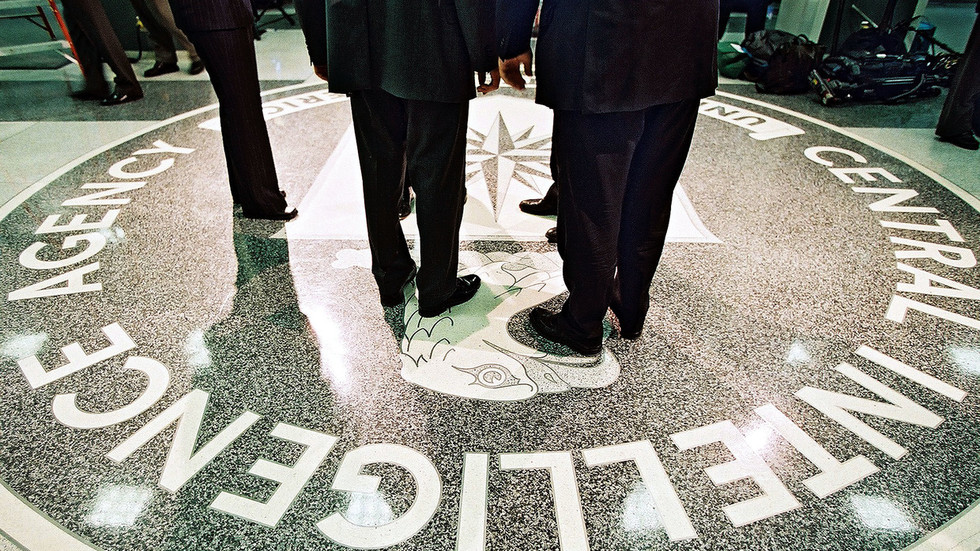SPOILER ALERT: This articles discusses plot details of “Speak No Evil,” in theaters now.
When “Speak No Evil” director James Watkins sat down to write a screenplay based on the 2022 Danish horror film from Christian Tafdrup, he had one person in mind to play a deluded, deranged father.
“I’m sure that lots of other brilliant actors could have played that role,” Watkins says of the patriarch character in the film. “But when I was writing it, I was thinking, ‘James McAvoy, I can just completely see him playing this character.'”
The remake follows a British family (McAvoy, Aisling Franciosi) who invite an American family (Mackenzie Davis, Scoot McNairy) to vacation at their remote home in the countryside. But, once the American family realizes not everything is what it seems, all hell breaks loose.
Here, Watkins discusses why he chose to use “Cotton Eye Joe” in a dance scene, what it’s like remaking a foreign film and his decision to change the original, “brilliantly bleak” ending.
What made you decide to remake a foreign film?
I’ve been offered remakes before and not been interested. I guess you have to love the original material. But also, you have to see a way to bring something of yourself or something a little bit different to it. Otherwise, it doesn’t seem to me any point in remaking exactly the same movie, because the movie exists and it’s good, and people can see it. It was very much sort of, “Okay. I really like this story, I really like these themes. I can see some way to build on it, supplant it, come at it slightly differently, tonally, culturally, thematically, in character choices.”
Do you remember the first time you saw the original Danish film?
I do because I hadn’t seen it. So Blumhouse sent it to me and said, “Listen, here’s a link. Check this out. See if you think there’s something in it for you.” I thought Christian [Tafdrup]’s film was brilliant. I thought it was brilliantly bleak — a kind of palate cleanser. It was so remorseless. And the ending, it was very powerful. I made a film a long time ago called “Eden Lake,” which has a similarly bleak and remorseless ending. And [Christian] had actually watched that film, and that was a reference for him. So it’s a kind of cyclical thing.
I wanted to take the ending in a slightly different direction for several reasons. Relocating it to the U.K. was the first conversation I had with Blumhouse. I said, “Listen, if I can make it in the U.K., I think I can make it real.” There’s characters there that I can know, and it won’t just be generic. But then I wanted these Americans. I grew up in England and in America a little bit, so I sort of thought, “Okay, if I’ve got these Americans coming in, that cultural collision that they have, and how that feeds into Christian’s themes immediately changes things.”
The original film focused on the cultural differences between a Dutch and Danish family. How did you try to translate those themes and cultural disconnects to a U.K. and American family?
There’s a kind of a cliche that Americans are very open and Brits are very repressed. But I think also there’s a sort of tribe of Brits, like Paddy, who are very Falstaffian, and really in your face. And there’s a type of Harvard educated-East Coast American that is quite repressed.
What was the writing process of building off of something that already existed?
It’d be lying to say it doesn’t massively help. At every turn you’re having a conversation of, “I wonder why they did that? I’m gonna go this direction.” A lot of heavy lifting has already been done. I definitely wanted to lean into the humor more. Christian’s film has a kind of austerity to it. I was saying the other day to McAvoy, it’s like Christian’s film is an acoustic album and ours is like electric guitar. It’s a cover version, just taking it musically into a different key. I could enjoy the horror more by enjoying the humor more. In the way that people like Ruben Ostlund, or filmmakers that I really admire, they enjoy that humor of the ick, of the social cringe. “White Lotus” does it. It’s that sense of, “How would I feel in that environment?”
What made you choose to change the original ending?
In Christian’s film, it takes it to the very end — this notion of how polite society can shackle you. I wanted to get to that end point in the second act. And then to build thematically on it because of the mortal danger. Scoot McNairy’s character is this man who feels part of the scrap heap. He sees this mentor figure in Paddy; this bad mentor who promises an old school masculinity. Ben signs up for that and thinks this loose couple will unlock them and that tt’ll be this weird couples therapy weekend.
And then the irony, is that when we get into the third act, this kind of model is seen to be completely false but also this idea of what Ben thinks is his masculinity, or what it should be, is completely false. The person who actually steps up is his wife, and the notion of this kind of these kind of tropes of masculinity are shown to be complete nonsense. It’s not sort of gendered, who is strong.
And then also with Ant, the young boy, I wanted to track that whole theme there, in terms of the Philip Larkin poem of how violence is sort of cyclical. “Man hands on misery to man.” There’s a real ambivalence about Ant killing Paddy. People might want the catharsis of that release, but I don’t think you can say it’s a Hollywood ending. It’s a pretty European version of a Hollywood ending. It’s not triumphant. It’s not an easy solution, saying, “Okay, our problems are behind us.”
Although your version doesn’t necessarily have a fairy tale happy ending, did you ever think about making it even bleaker than it is?
People can have different reads on whether their relationship is recovered or not. That didn’t need to be bleaker, because there’s a real sadness to it. It’s in the music and it’s in Dan’s face. They’ve survived, but it’s not in any way apt. It’s not just like all’s well with the world.
The Danish film came out in 2022. What was the reasoning behind remaking it so quickly?
It was just a good story. I try not to look outside. For me, if it’s a good story, is it worth telling? Can you add things to it? I mean, Christopher Nolan made “Insomnia” not very long after the Norwegian original. The two films can and should co-exist and have a conversation with each other. If they’re both doing exactly the same thing. This film’s brought something slightly different, but honors Christian’s film. Sometimes people go, “Well, why the hell did you do that?” But if you watch the film with an open heart, I think it answers the question.
What was it like working with James McAvoy, directing him and seeing his acting process?
James is a gift. He’s possibly the most talented actor I’ve ever worked with. We had such a classy cast that we could just keep excavating as we went along, finding new things within it, and then bouncing off each other and playing tennis with each other. But James, he’s incredibly relaxed on set. But then when he’s in it, he is so in it. He is aware of what he’s doing, but sometimes you can say to him, “I like that thing you did.” And he’s like, “Oh, did I do that?” The best actors, they don’t act. They are.
Was he at the top of the list for actors you wanted?
He literally was. The truth is, most people never get the top person on their list. But I was talking with Jon Harris, the editor I’ve worked with a lot, and he’s cut a lot of movies with James in them. When I was writing, I sent an early draft to John and we chatted about it. He was like, “It’s got to be McAvoy, right?” And I was like, “Yeah, that’s what I think.” I didn’t really have a plan B. I’m sure that lots of other brilliant actors could have played that role. But when I was writing it, I was thinking, “James McAvoy, I can just completely see him playing this character.” There was a film he did called “Filth,” where he plays such a reprehensible character, but he brings tragedy in a way you just can’t quantify. The guy is awful, but somehow, James just gives you enough to keep you going.
There was a lot of buzz around using “Cotton Eye Joe” in the film, especially from the trailer. Did you write that specific song into the script?
I can’t remember whether it actually says “Cotton Eye Joe” in the script, but it was certainly in my head. I thought of doing “Crazy Frog,” but that’s just too bloody annoying. “Cotton Eye Joe”: the ear worm of it, and also the fact that we’re on a farm. There’s a country vibe to it. I can put the kids in this outfit. There was just a sort of story that it told. And also with Paddy, with all the music, there’s a throwback. He’s slightly arrested. I imagine he’s a guy that listens to ’80s/’90s radio. I’d imagine that’s in his world. That unreconstructed age was probably his heyday.
Part of the big reveal is shown in the trailer. How do you keep a balance between drawing people in, but also keeping things hidden?
Well, as a filmmaker, you don’t make the trailer, you watch the trailer and you respond to it. Generally, we live in a world where trailers probably show more than filmmakers want. But it is trying to entice people into seeing the film. They do that brilliantly. It’s very easy as a filmmaker to get a bit precious and go, “I really want that really cool, classy poster.” And then they go, “Well, yeah, but no one’s going to see your movie.” These people are very skilled at their jobs and have a lot of experience. It’s just so empirical, how they try and figure out these things. It’s just a different creative part of our industry.
This interview has been edited and condensed.
.png)









 English (US) ·
English (US) ·